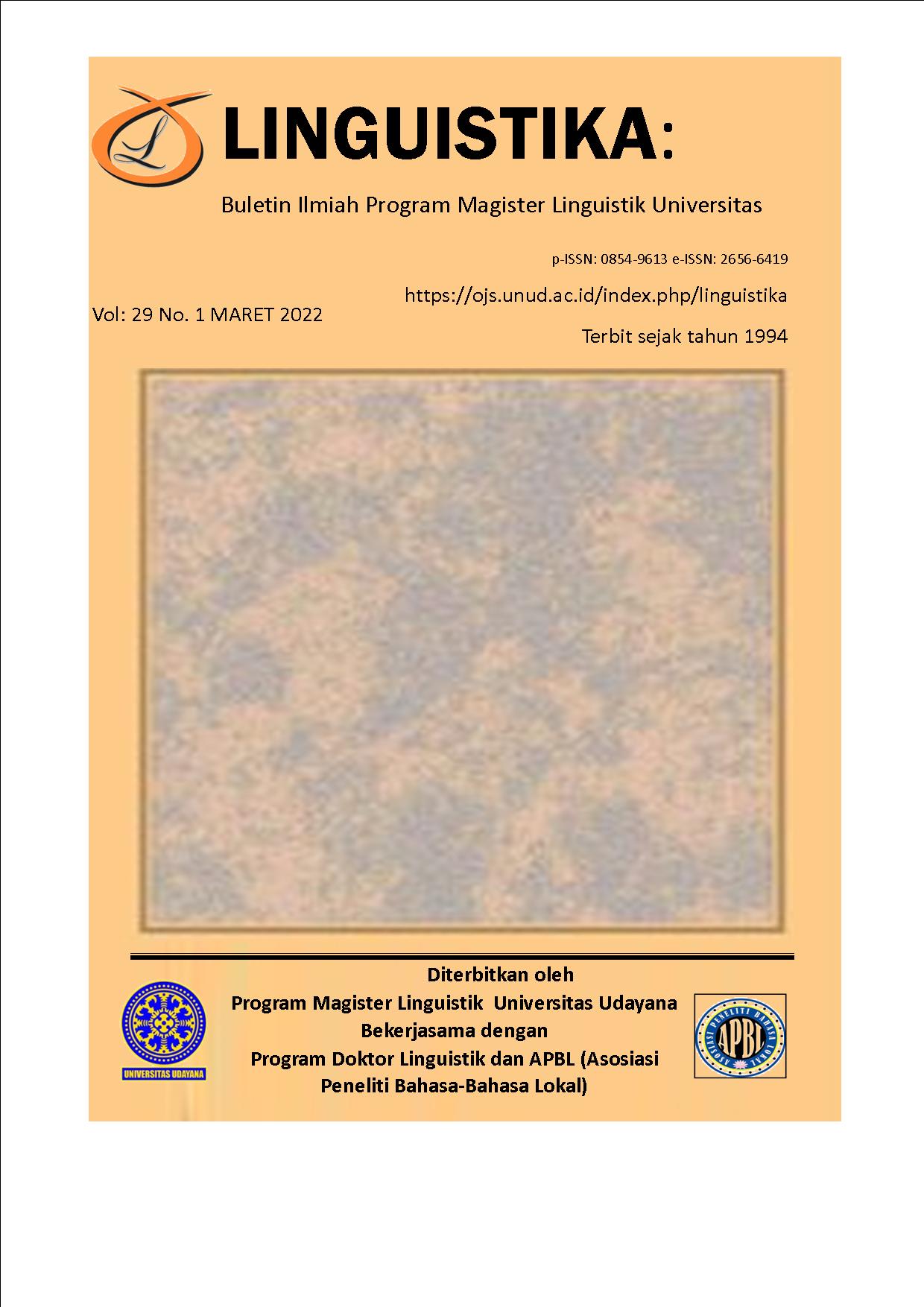Figurative Language Used in Hollywood’s Bleeding Album by Post Malone
Abstract
Abstract--This research aims at finding out the types of figurative language and to analyze the meaning of the figurative language conveyed in Post Malone’s songs in the album entitled Hollywood’s Bleeding. The method used in collecting data is the descriptive qualitative method. The data were analyzed based on the theory types of figurative language from Knickerbocker and Reninger (1963), Knickerbocker and Reninger. Theory proposed by Leech (1981) was applied to find out the meaning. The result shows that there are eight types of figurative language used in Post Malone’s songs.They are simile (4 items or 13.8%), personification (2 items or 6.9%), metaphor (3 items or 10.3%), hyperbole (8 items or 27.6%), synecdoche (2 items or 6.9%), metonymy (2 items or 6.9%), irony (2 items or 6.9%) and paradox (6 items or 20.7%). There were 29 sentences identified using those eight types of figurative languages states above. The dominant types of figurative language is hyperbole because the songwriter is put more exageration to the lyrics to make them sounds beautiful.
Keywords: Figurative language; Hollywood’s Bleeding; Post Malone













